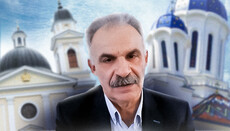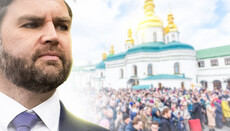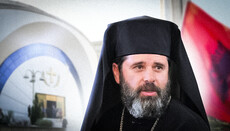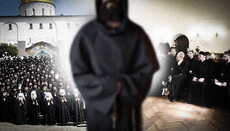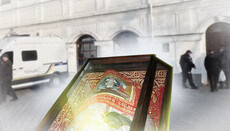Suddenly blind: Why Phanar is no longer able to see UOC
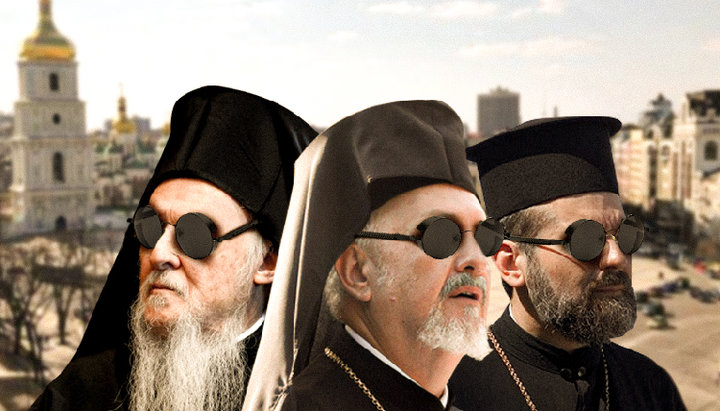
The whole Orthodox world recognizes the UOC as a canonical Church in Ukraine. Phanar just ignores it. Why is this happening and what are we today for Constantinople?
On August 17, 2019, Orthodox Ukraine celebrated the fifth anniversary of the primatial ministry of His Beatitude Onuphry at the Throne of the Metropolitan of Kiev. A little earlier, on June 25, 2019, the feast of St. Patron’s Day of the UOC Primate was magnificently celebrated.
The hierarchs of almost all the Local Churches arrived at the Kiev-Pechersk Lavra to greet and congratulate His Beatitude Onuphry. All their visits were official and were blessed by their Primates. The hierarchs of two Autocephalous Churches were also present at the Great Cross Procession of the UOC on the Day of the Christianization of Rus on July 27, 2019. All these facts say that His Beatitude Onuphry is still a legitimate and canonical Primate of the Ukrainian Orthodox Church in the eyes of World Orthodoxy.
A year ago, such lines could cause bewilderment with the reader – well, it’s clear, so what? What are these phrases in the style of Captain Obvious for?
The problem is that in the process of granting the Tomos to schismatics, the position and canonical status of the Ukrainian Orthodox Church in the eyes of Phanar became somehow completely fantastic. More precisely, at some point the UOC ceased to exist for Patriarch Bartholomew and Co. It was as if all the hierarchs of Constantinople suddenly put on special glasses, through which one can see some special Phanariot reality, different from the reality of the rest of the world. This reality suggests that on the territory of Ukraine there is exclusively one organization – OCU, which the rest of the Local Churches have not yet recognized because of the machinations of Moscow and its own canonical short-sightedness. In this reality, the iron will of Patriarch Bartholomew has embraced all Ukrainian Orthodoxy under the wing of the “holy church of Ukraine" and those, who refused to join it, ceased to exist for fanariots.
And despite the fact that the amount of parishes, priests, monasteries and believers of the Ukrainian Orthodox Church outnumber those in the OCU manifold, this doesn’t make a difference to Phanar – special filters are inserted in their glasses that cut off any “inconvenient” information.
For all hierarchs of World Orthodoxy, His Beatitude Onuphry is a canonical Primate of the canonical Ukrainian Orthodox Church – and only for Phanar hierarchs he is a phantom that does not exist.
Over the past six months, representatives of the Mother Church, in particular, Metropolitan Emmanuel of France, have repeatedly come to Kiev, but there has never been a single attempt from him or other hierarchs of Phanar to contact with its “children” from the UOC.
It even got to the point of absurdity. In the summer of 2019, representatives of almost all Local Churches (except Georgian and Hellas) were staying simultaneously in Kiev, including Constantinople. But while the hierarchs of all the Churches (with the exception of Phanar) were in the Kiev Pechersk Lavra and took part in divine services and festivities of the Ukrainian Orthodox Church, representatives of the "Mother Church" turned up exclusively at St. Michael Cathedral among the "bishops" of the OCU.
Consequently, for all hierarchs of World Orthodoxy His Beatitude Onuphry is a canonical Primate of the canonical Ukrainian Orthodox Church – and only for Phanar hierarchs he is a phantom that does not exist. Sounds absurd? Of course.
But why is this happening? After all, Constantinople is the Church, claiming the status of "the first without equal", as well as the keeper of church canons.
We will not analyze a moral aspect of the actions of the fanariots but instead dwell on the assessment of Constantinople as "the primary on the canons".
On the organization of the Church of Christ
We know that the Orthodox Church in the world is one. There is no separate Romanian, Georgian, Serbian and other Churches. There is the Church of Christ in the territory of modern Romania, Georgia, Serbia and others.
The division of the Church of Christ into local units is rather conventional and does not mean at all that each of the Local Churches is a separate church state. Also, the boundaries of autocephalous church structures should not by all means coincide with the borders of states. The Alexandrian Patriarchate supervises all the countries of the African continent, while the jurisdiction of Constantinople includes the communities of Turkey, Europe, Australia, the USA, Canada, etc.
The One Church of Christ is represented in different territories in the form of separate Local Churches only for the convenience of administering and providing spiritual guidance to believers, nothing more. In view of this, one of the fundamental principles of the administrative organization of the Church is the principle of “one city - one bishop”, which was worded at the First Ecumenical Council. In other words, only one Local Church can function in one territory (one state).
Phanar's attitude to UOC: from recognition to phantom status
In Ukraine there have been no questions in relation to this principle until recently. Absolutely everyone in World Orthodoxy recognized the territory of this country as the jurisdiction of the Ukrainian Orthodox Church, which has the status of broad autonomy in the Russian Orthodox Church. Until 2018, the Patriarchate of Constantinople did not have any doubts about this.
In 2014, at the Kiev-Pechersk Lavra, during the enthronement of His Beatitude Onuphry, Metropolitan Emmanuel of France read out a message from Patriarch Bartholomew:
“With fraternal joy, we learned about your election to the historical and glorious throne of the Kiev Metropolis. On the eve of the bright holiday of the Transfiguration, we pray to the Lord Jesus Christ that He grant Your Beatitude spiritual fortitude to lead a herd of believers to contemplate His Divine grace.
At this joyful moment, we cannot forget our brother and concelebrant Metropolitan Vladimir, who reposed in the Lord. We continue to pray for the repose of his soul. For many decades, Metropolitan Vladimir has been the guarantor of stability and peace, leaving as a legacy a high example of responsibility that now falls on your shoulders.
But mourn must yield to joy. Your election and your enthronement are marked by the opening of a new chapter in the history of the Orthodox Church in Ukraine. <...>
The Mother of Constantinople Church, which enlightened the people of Kievan Rus with Christianity, has always shown true parental care for your Church throughout many blessed centuries of shared history, as well as during tragic events that overshadowed the political life of your country. It is impossible to calmly watch how many lives have been lost by the madness of death that has ridden the country in recent months. This fratricide should end as soon as possible. <...>
The voice of arms must subside so that there could be genuine dialogue, which will become the basis for the development of a worthy Ukrainian society in its diversity and pluralism. Paradoxical as it may seem, the crisis that is shaking Ukraine today can serve as a positive factor in this dialogue.
With joy in the Lord, Who showed Transfiguration on Tabor, we send you our fraternal greetings from the Ecumenical Patriarchate and pray that the Lord may support you from heaven and see and attend your vineyard and protect what His right hand has planted (Ps. 79).
+ Bartholomew, Patriarch of Constantinople, brother and concelebrant in Christ ”
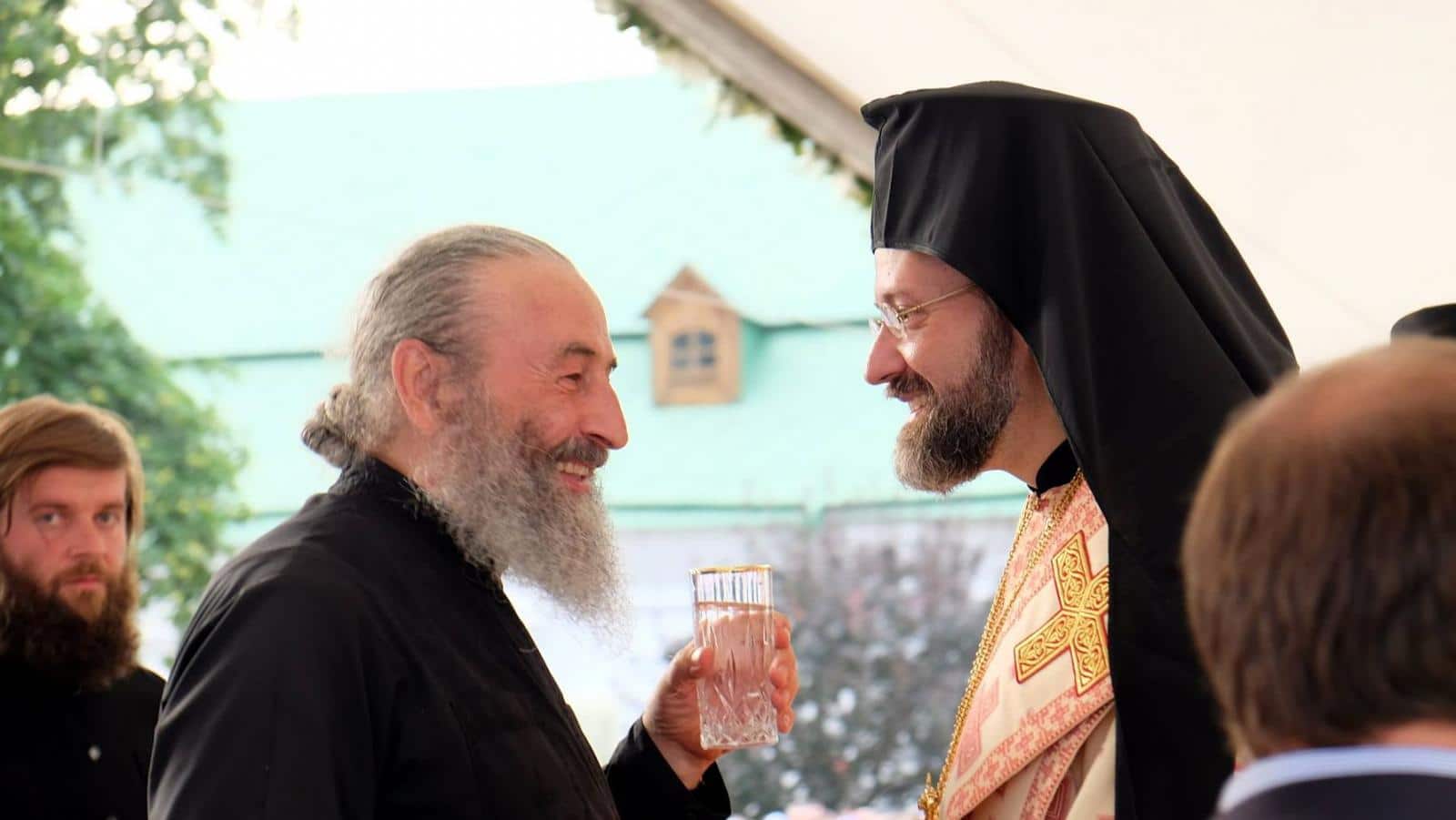
On January 22, 2016, at a meeting of Primates of the Local Orthodox Churches in the Swiss city of Chambesy, Patriarch Bartholomew welcomed His Beatitude Metropolitan Onuphry of Kiev and All Ukraine and called him the only canonical first hierarch of the Ukrainian Orthodox Church.

Hardly had another two years passed when in December 2018, Metropolitan Onuphry received a letter from Patriarch Bartholomew. The letter, which was very different from the message on the occasion of enthronement and was imbued with completely different tonality.
Here are a few quotes.
- "On October 11 of this year, our Holy and Sacred Synod canonically revoked the binding force of the Patriarchal Letters of the blessed Patriarch Dionysius IV of the year 1686, which had been unilaterally abolished by your side and the Russian Patriarchate a long time ago."
- “We also notify you that the historical Metropolitanate of Kiev and the ecclesiastical eparchies within the territory of Ukraine have already come under the canonical status that existed before the issuance of the aforementioned Letters, i.e. being fully dependent on our Holy Apostolic and Patriarchal Ecumenical Throne."
- “Thus, <...> addressing you as the ‘Eminent Metropoltian of Kiev’, in a form of oikonomia and condescension, we notify you that after the election of the Primate of the Ukrainian Church you will not be ecclesiologically and canonically able to bear the title of the Metropolitan of Kiev, which, anyway, you possess today in transgression of the prescribed terms in the official documents of 1686."
When reading these quotes, an inevitable question arises – what happened in between writing of these two letters? What event made Patriarch Bartholomew jump from congratulations to Metropolitan Onuphry on his election to the "historical and glorious throne of the Kiev Metropolitanate" to the claim that he possesses this title "in transgression of the prescribed norms in the official documents of 1686"? What was wrong about Metropolitan Onuphry, what canonical crime did he commit?
Perhaps Patriarch Bartholomew knows something being unknown to others?
It is very likely that the “wrong” side of His Beatitude Metropolitan Onuphry was voiced at a briefing on the five-year ministry’s anniversary of the Primate by the UOC Chancellor, Metropolitan Anthony (Pakanich) of Borispol and Brovary. He said that over the five years of service of His Beatitude Onuphry, the number of bishops of the UOC had increased by 15, clergy – by 439, monasteries – by 30. But the most surprising thing despite the fact that schismatics seized a lot of temples of the UOC and illegally re-registered them in favor of the OCU, despite the fact that that the Ministry of Culture secretly ordered to refuse registration of the UOC communities – the number of parishes has increased by 184.
These are very eloquent figures which just a year ago, at the height of the Tomos epic and pressure on the Church, looked highly improbable. One gets the impression that they looked particularly unlikely at that time for Patriarch Bartholomew and other hierarchs of Phanar.
It seems that now the leadership of the Constanitnople Church feels paradoxically offended by the UOC. Indeed, Constantinople cherished hopes that with the creation of the OCU, the Ukrainian Orthodox Church would “crumble” and join the new Phanar-patronized structure in orderly ranks. Of course, in Istanbul they suspected that some small part would remain faithful to the UOC, but this would be a scanty number of outcasts who might not be noticed.
Phanar planned to reassign all the dioceses and parishes of the UOC to the Orthodox Church of Ukaine and take them under its control. In this case, there would be no canonical claims to the hierarchs of Constantinople: there was one Church in Ukraine – the UOC, and as a result, there remained also one Church in Ukraine – the OCU.
Did Phanar manage to create double jurisdiction or not?
However, everything went awry and now, from the point of view of Patriarch Bartholomew (because from the point of view of all the other Local Churches, nothing has changed, since the OCU is not recognized by anyone), there are two canonical church structures in our state, which is an obvious violation of the canonical “one city – one bishop” rule.
In this context, one cannot but recall the statements of Archbishop Job (Getcha) of Telmessos during his visit to Kiev for the celebrations dedicated to the Baptism of Rus in 2016.

“The main goal of the Ecumenical Patriarchate is the unity of the Orthodox Church in Ukraine. Everyone – both Ukrainians and Orthodox Christians around the world – are tired of the split. The Ecumenical Patriarchate does not plan to create another parallel jurisdiction in Ukraine, because such a non-canonical position will only exacerbate the problem.”
On November 2, 2018, already at the height of the Constantinople-provoked crisis, the same Archbishop Job (Getcha) gave an interview to the Russian BBC service, in which he said: “According to the canons of the Church, there cannot be two parallel Churches in the same territory. If it turns out that whoever does not want Ukrainian autocephaly, may remain as a Russian exarchate or it is not clear what, it is simply anti-canonical. According to the canons of the Church, there should be only one Orthodox Church in the territory of one state, and this autocephalous Orthodox Church should unite everyone.”
What do we have today? The Patriarchate of Constantinople created precisely a parallel jurisdiction. Moreover, the OCU is a parallel jurisdiction from the point of view of Phanar only. From the standpoint of the UOC and all Local Orthodox Churches, it is a schismatic organization that has nothing to do with the Church of Christ. Moreover, according to Constantinople, the UOC is canonical as well. Let it not be considered by Phanar as Ukrainian, let it be called simply an exarchate or some other structure of the Russian Orthodox Church (the refutation of these errors is not the task of this article), but it is still recognized as the Church. So we have got namely a parallel jurisdiction.
Estonian scenario in Ukraine
In the aforementioned interview with the Russian BBC service, Archbishop Job mentioned the situation in Estonia. When he spoke about the impossibility of the existence of two jurisdictions in the same territory, the correspondent asked a logical question:
“BBC: How about Estonia?
Archbishop Job: The Church in Estonia, firstly, is not autocephalous. This is an autonomous church, there is a difference. And secondly, the Estonian version was a compromise, found temporarily.
BBC: You mean Estonia will not be the case in Ukraine?
Archbishop Job: If we want to follow church canons, there can be no repetition of Estonia in Ukraine.”
Archbishop Job let it slip and admitted: what the Patriarchate of Constantinople created in Estonia is not canonical and will not be repeated in Ukraine. But this is exactly what the Patriarchate of Constantinople repeated in our country.
Let’s recall briefly what happened in Estonia.
The history of the Estonian church turmoil began in 1922 when, under pressure from the authorities, the Estonian hierarchs within the autonomous Estonian Apostolic Orthodox Church within the Russian Orthodox Church appealed to Patriarch Meletius (Metaxakis) of Constantinople with a request to grant them autocephaly with preliminary incorporation into their jurisdiction. Just like in Ukraine. Patriarch Meletius not only did not grant them autonomy, but turned it into a metropolis altogether. Looks very much like the current Ukrainian situation, doesn’t it?
In the Tomos of July 7, 1923, it was called precisely in that way – the Estonian Orthodox Metropolis. In 1941, the Church of Estonia returned to the Russian Orthodox Church, then again left it and returned again already with the liberation of the Baltic states from the Nazis. And in 1948, the so-called “Synod of the Estonian Apostolic Orthodox Church in Exile” was created in Stockholm in the jurisdiction of the Patriarchate of Constantinople, which united several Orthodox parishes outside Estonia.
In the early 1990s, this purely nominal organization, which had practically no clergy and parishioners, declared the rights to all church property in Estonia. And the Estonian authorities recognized these lawless claims. As a result, today in Estonia there are two parallel jurisdictions: the Moscow Patriarchate under the name "Estonian Orthodox Church of the Moscow Patriarchate", which unites 100,000 believers and has 31 temples, and the Patriarchate of Constantinople under the name "Estonian Apostolic Orthodox Church" with only 7,000 believers and 60 temples. Thus, the Constantinople jurisdiction has twice as many temples and 14 times as few parishioners.
These are two parallel jurisdictions.
Archbishop Job (Getcha) said in an interview with the BBC that the Estonian version would not be repeated in Ukraine. But for some reason, the former Ukrainian authorities tried to repeat it and succeeded in many ways. The temples were taken away – but there are no parishioners in them.
What do we have in the end?
- Constantinople with the help of the secular authorities of Ukraine planned to carry out a blitz operation to raider the UOC and transfer it to the new structure, which will be actually controlled by Phanar. Thanks to the resilience of the episcopate and the UOC believers, this plan failed.
- As a result of these actions, Phanar, which positions itself as a “keeper of canons,” violated these canons in the most obvious way, since it created a parallel jurisdiction in Ukraine. And although none of the Local Churches recognized the formation, called the Orthodox Church of Ukraine, from the point of view of Constantinople this is a Church, which in fact exists simultaneously with the Ukrainian Orthodox Church.
- As a result of the failure of the “Ukrainian operation”, hierarchs of Phanar thoroughly pretend that the Ukrainian Orthodox Church now does not exist, and only the OCU operates in the territory of the state. The Church of Constantinople is compelled to do so, because otherwise its hierarchs will have to recognize their actions from the point of view of the Church law as criminal.
- All Local Churches still consider the UOC as the canonical Church in Ukraine. Moreover, all the talk about the possible recognition of the OCU is futile for a very simple reason – the impossibility of observing in this case the canonical rule "one city - one bishop". It means if the Metropolitan of Kiev is Epiphany, then His Beatitude Onuphry can no longer be the one and if the OCU is a canonical Church, then what is the status of the UOC? These questions are insoluble. Therefore, any Local Church, considering the issue of recognizing the OCU, inevitably faces a choice – either the OCU or the UOC.
In any case, the representatives of the Patriarchate of Constantinople drove themselves into a canonical dead end, from which there is no way out.
An attempt to create in the territory where the Orthodox Church has been functioning for centuries, a new schismatic church structure, furthermore, the attempt complicated by inciting religious hatred within one nation, is nothing but a canonical crime, which the Orthodox world has yet to evaluate.
Meanwhile the Church of Constantinople pretends to be visually impaired, showing total disregard for thousands of parishes and millions of believers of the Ukrainian Orthodox Church.
The climax of this absurdity could be viewed on July 27 and 28, 2019, when on the Day of the Baptism of Rus, at least 10 times more believers came to the Great Cross Procession of the “nonexistent” Ukrainian Orthodox Church than to a similar procession of the Orthodox Church in Ukraine. And it is especially significant that hierarchs of Phanar, led by Metropolitan Emmanuel of France, who were staying in Kiev these days, had the opportunity to watch this big event personally.
As a result, we see the paradoxical coexistence of two realities in the perception of the Ukrainian church situation – the objective reality and the fanariotic reality. However, this cannot go on forever.
Someday, church historians will shrug their shoulders and wonder how it could happen so that the hierarchs of the Mother Church, who at every liturgy preach the word of Christ to believers, including “Blessed are those who hunger and thirst for truth, for they will be filled” (Matt. 5, 6), could have acted in this way.
